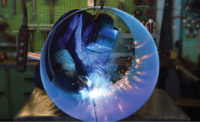It’s understandable to focus on being cautious when operating machinery or cutting sheet metal. But one safety risk that’s easy to overlook on the job is being exposed to metalworking chemicals.
When handlingmetalworking chemicals, it’s important to follow all safety procedures outlined by your workplace and the Occupational Safety and Health Administration (OSHA). You’ll find chemical safety procedures on OSHA’s website, and your workplace should have safety procedures posted in plain view of your work area.
Exposure to hazardous chemicals can have adverse effects on your skin and lungs, not to mention the rest of your insides if accidentally ingested. Protect yourself from coming in contact with dangerous liquids or fumes by wearing protective gear and handling chemicals properly. Even those who have been in the metalworking field for decades should pay careful attention to whether they’re following all safety procedures.
But chemical safety doesn’t stop when the workday does. After work, make sure to store personal equipment in the trash or a receptacle for dirty work clothes. Don’t bring home anything that’s come in contact with metalworking chemicals — keep chemical-handling items at work or in a special compartment in your vehicle.
Check yourself often for signs of chemical exposure, and pay attention to any changes in your health. If you think you’ve been affected by chemical contamination, don’t ignore the symptoms — talk to your manager or doctor immediately.
Using proper chemical-handling techniques is the key to staying safe in a hazardous environment. This “Metalworking Chemical Safety” infographic provides even more information on handling chemicals like a pro.




